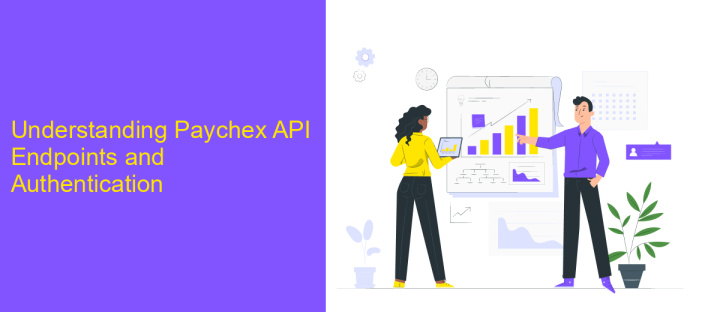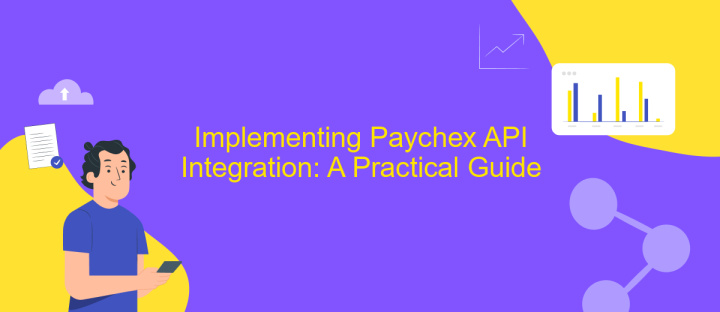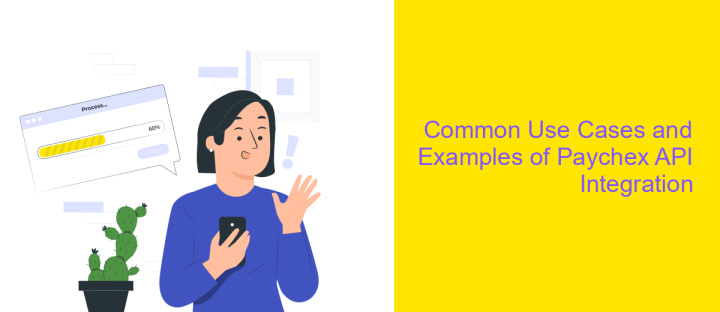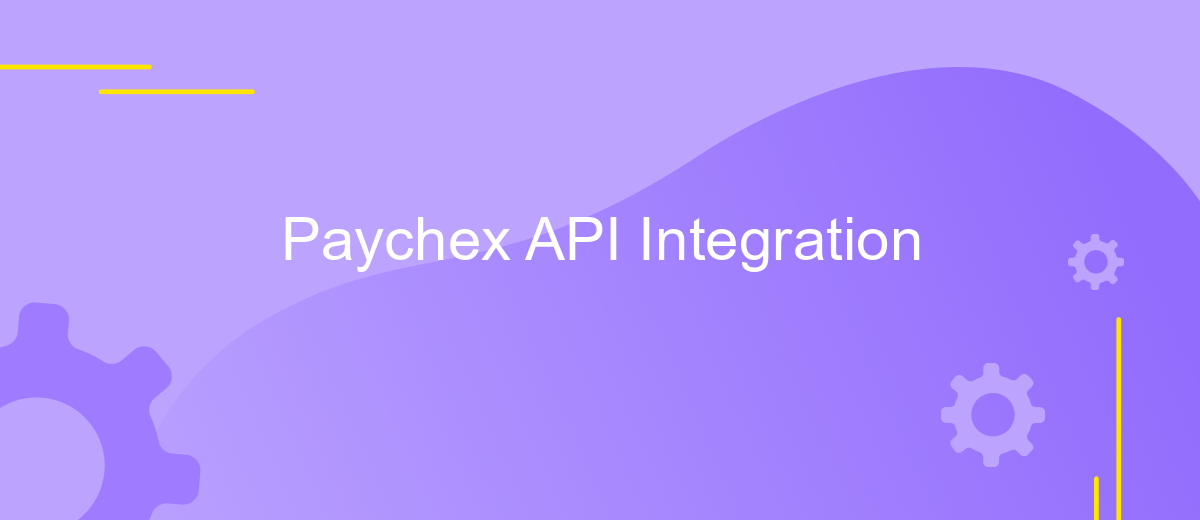Paychex API Integration
The Paychex API Integration is revolutionizing how businesses manage their payroll and HR processes. By seamlessly connecting Paychex's comprehensive suite of services with existing business systems, this integration streamlines operations, enhances data accuracy, and improves overall efficiency. Whether you're a small business or a large enterprise, leveraging the Paychex API allows you to automate tasks, reduce manual errors, and focus on strategic growth initiatives.
Introduction to Paychex API and its Benefits
The Paychex API offers a seamless way for businesses to integrate payroll and HR solutions into their existing systems. It provides a comprehensive set of tools that simplify the management of employee data, payroll processing, and compliance. By utilizing Paychex API, companies can streamline operations, reduce manual errors, and enhance overall efficiency.
- Automated payroll processing: Reduce time spent on manual calculations and ensure accuracy.
- Real-time data access: Retrieve and update employee information instantly.
- Compliance support: Stay up-to-date with the latest regulations and requirements.
- Scalability: Easily adapt to the growing needs of your business.
- Enhanced security: Protect sensitive employee data with robust security measures.
Integrating Paychex API into your business processes not only enhances operational efficiency but also ensures your company remains competitive in today's fast-paced environment. By automating routine tasks and providing real-time insights, Paychex API empowers businesses to focus on strategic growth and employee satisfaction. Whether you're a small business or a large enterprise, leveraging Paychex API can be a game-changer in optimizing your HR and payroll functions.
Understanding Paychex API Endpoints and Authentication

Understanding Paychex API endpoints is crucial for seamless integration with your existing systems. Paychex provides a variety of endpoints that allow you to access different functionalities, such as employee data, payroll processing, and benefits management. Each endpoint is designed for specific tasks, ensuring that you can efficiently retrieve or update the needed information. To get started, you must familiarize yourself with the documentation provided by Paychex, which outlines the available endpoints and their respective parameters. This knowledge will enable you to tailor the API calls to meet your organization’s specific needs.
Authentication is a critical aspect of working with the Paychex API. It ensures that only authorized users can access sensitive data, maintaining the security and integrity of your information. Typically, Paychex employs OAuth 2.0 for authentication, which requires obtaining an access token before making API requests. This token acts as a key, granting you permission to interact with the endpoints. For those seeking to simplify the integration process, services like ApiX-Drive can be invaluable. ApiX-Drive offers tools that automate and streamline the connection between Paychex and other platforms, reducing the complexity and time required for setup.
Implementing Paychex API Integration: A Practical Guide

Integrating Paychex API into your system can streamline payroll and HR processes, enhancing efficiency and accuracy. To begin, ensure you have a comprehensive understanding of Paychex API documentation. This will guide you through authentication, endpoints, and data formats required for seamless integration. Additionally, establish a secure environment for data exchange to protect sensitive employee information.
- Register for API access through the Paychex developer portal to obtain necessary credentials.
- Set up authentication using OAuth 2.0 to ensure secure access to the API.
- Identify the specific endpoints needed for your integration, such as employee data or payroll processing.
- Develop and test API calls in a sandbox environment to validate functionality and troubleshoot issues.
- Implement error handling and logging to monitor API interactions and ensure reliability.
Once integration is complete, regularly review and update your implementation to accommodate any changes in the Paychex API or your business requirements. Continuous monitoring and optimization will help maintain a robust connection, providing real-time access to critical payroll and HR data. This proactive approach ensures that your organization benefits from a seamless and efficient Paychex API integration.
Common Use Cases and Examples of Paychex API Integration

Integrating Paychex API into business operations streamlines payroll, HR, and benefits management. By connecting Paychex API with existing systems, companies can automate data transfer, reduce manual entry, and enhance accuracy. This integration is particularly beneficial for businesses looking to improve efficiency and maintain compliance with employment regulations.
One common use case is synchronizing employee data across platforms. This ensures that any changes in employee status, such as new hires or terminations, are updated in real-time across all systems. Additionally, integrating Paychex API can simplify the process of generating payroll reports, providing businesses with timely insights into labor costs and financial planning.
- Automated payroll processing and tax calculations
- Real-time employee data synchronization
- Streamlined benefits enrollment and management
- Enhanced compliance with labor laws and regulations
By leveraging Paychex API integration, businesses can focus more on strategic initiatives rather than administrative tasks. This not only saves time but also minimizes the risk of errors associated with manual data entry. Ultimately, integrating Paychex API supports a more agile and responsive business environment, allowing companies to adapt quickly to changing workforce needs.
Best Practices and Troubleshooting for Paychex API Integration
To ensure a seamless Paychex API integration, it's essential to follow best practices such as maintaining clear and consistent documentation, utilizing secure authentication methods, and regularly testing API endpoints. Properly structured and well-documented code can significantly reduce errors and improve the integration process. Implementing robust error handling and logging mechanisms is crucial for identifying and resolving issues swiftly. Additionally, leveraging tools like ApiX-Drive can simplify the integration process by providing a user-friendly interface and automating data transfers between Paychex and other platforms.
When troubleshooting integration issues, start by verifying that all API keys and credentials are correctly configured and have the necessary permissions. Check network connectivity and ensure that firewall settings allow communication between your system and Paychex servers. Review API response codes and error messages to pinpoint the source of the problem. Regularly updating your integration to align with Paychex API changes can prevent compatibility issues. If challenges persist, consult Paychex's support resources or consider reaching out to ApiX-Drive's support team for expert assistance.
FAQ
What is Paychex API Integration?
How can I start integrating Paychex API with my system?
What are the benefits of integrating Paychex API with my business systems?
Are there any tools available to help with Paychex API integration?
What should I do if I encounter issues during Paychex API integration?
Strive to take your business to the next level, achieve your goals faster and more efficiently? Apix-Drive is your reliable assistant for these tasks. An online service and application connector will help you automate key business processes and get rid of the routine. You and your employees will free up time for important core tasks. Try Apix-Drive features for free to see the effectiveness of the online connector for yourself.

